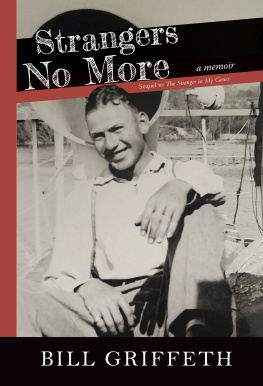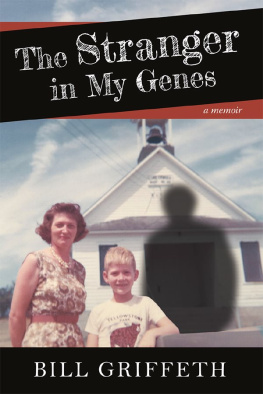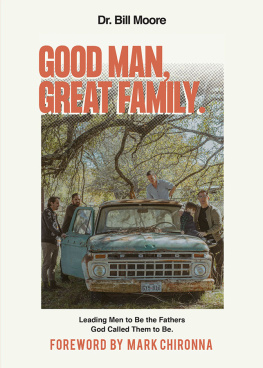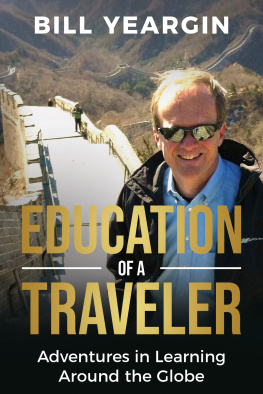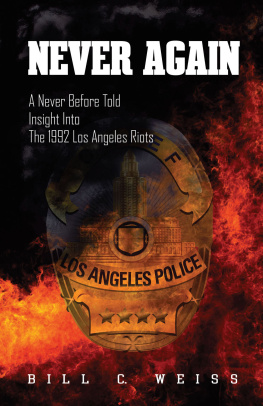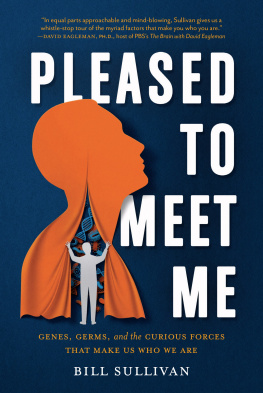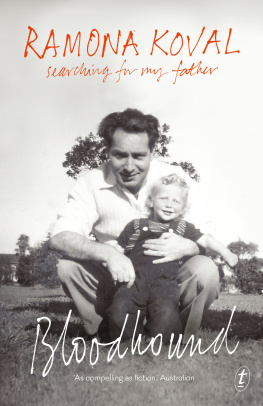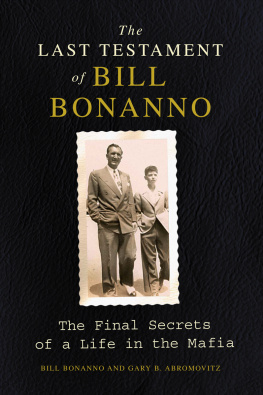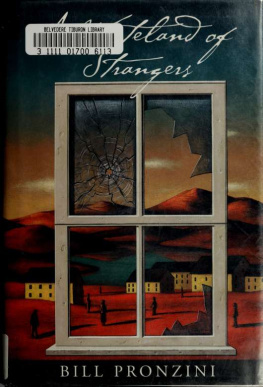Contents


Copyright 2022 by Bill Griffeth.
All rights reserved. No part of this publication may be reproduced or transmitted in any form or by any means, electronic or mechanical, including photocopying, recording, or any information storage or retrieval system, without permission in writing from the copyright holder, except for the inclusion of brief quotations in a review.
ISBN-13: 978-0-88082-413-2
Library of Congress Control Number: 2022931810
Design by Ellen Maxwell.

This book is for the members of my DNA Club. Those I have met, and those I will never meet.
In the summer of 2012, I took a mail-in DNA test that changed my life. The results told me that the father who raised meand who had died years earlierwasnt my biological father. I wrote a book about that devastating experience called The Stranger in My Genes, published by NEHGS in 2016. This book continues my journey where Stranger left off. Much has happened. I have been in contact with members of my biological family, and I experienced what I consider to be an even more significant revelation thanks to another DNA test.
My previous book exposed the emotions I initially experienced. They were raw and unruly. I was angry. Depressed. Unstable. I felt alone. But Im in a better place now. The wound has healed. I have had time to process my feelings and gain new perspectives. Im able to embrace my new normal.
I initially believed that my DNA test had changed my identity. Im not who I thought I was! I bemoaned. Im not a Griffeth. But I have come to realize that my friends who tried to convince me otherwise were right. My identity didnt change. What changed were relationships. The relationships that define me.
First, there were all of the ancestors and relatives in my Griffeth family tree. The tree my wife Cindy and I spent years assembling. Each of my antecedents had come alive for me when we found their names in long-faded courthouse records or on headstones in forgotten graveyards. These were the people who made me who I am today. Or so I thought.
There was my earliest known paternal ancestor, my 8th great-grandfather William Griffith (the original spelling of our surname), a rebellious early Quaker who lived on Cape Cod in the 17th century and was persecuted by the colonys puritan leaders. And there was Judah Griffeth, my 3rd great-grandfather, another rebel and early member of the Church of Jesus Christ of Latter-day Saints in 19th-century Ohio who also suffered severe persecution as a result. And the most tragic figure in my familys history, my 6th great-grandmother, Mary Towne Esty, a pious mother of nine children who was unjustly hanged during the Salem Witch Trials of 1692. Before her execution, Mary scribbled a petition to the local authorities pleading for an end to the madness. I went to the library in Salem where that document is stored, held it in my hands, and slowly and carefully read each word she had written. I swear I felt her presence in those moments.
I was proud to be descended from these people. Proud of their determination to hold fast to their beliefs in spite of life-threatening peril. But the DNA test effectively severed my connection to them. And it brought my genealogical research to a screeching halt. I literally abandoned it overnight, leaving notebooks and documents and computer files just where I left them the day I got my DNA test result. And while I still carry the memory of these former ancestors in my heart and fondly recall the excitement of the hunt, my relationship with them is just not the same because I am not related to them by blood, and that matters. It really does.
And there are my fathers. Both of them. For a long time, I struggled to figure out what I was supposed to call them. When I said Dad, who was I talking about? And what should I call the other one? The answer came to me in the spring of 2019 when I sat on a panel with two college professors in Santa Clara, California. We were there to talk about the ethics and morality of DNA testing. (More about that later in .) One of them, a woman named Margaret McLean, Professor of Bioethics at Santa Clara University, said to me that after my DNA test, I now had two families: my biological family, the strangers I was related to by blood, and my biographical family, the people I grew up with. That is the shorthand I now use to make the distinction.
Then there are my four siblings. My DNA test gave them a new label: half-siblings. Referring to them that way feels like a demotion. Its less intimate. So impersonal. And since my biological father had three children, I have more half-siblings. On a genealogy chart, my relationship to these three people I have never met is equal to the four I grew up with. Thats just weird.
Clearly, the relationship that changed the most was with my mother. And not for the better. She refused to answer my many questions about my biological father, which affected how we interacted with each other. Our conversations became superficial. We stuck to safe topics. Lots of talk about friends and relatives, but not about each other. No more shared intimacies. There were also plenty of awkward moments of silence. I could often sense the discomfort she was feeling because I was feeling it, too. She was in constant fear that I was going to bring up what we euphemistically referred to as my DNA issue. More than once, I said to her, This changes nothing between us, but I dont think she ever believed it. Sadly, I think she was right.
This book is in four parts.
. This was the most difficult part of the book for me to write. The troubling question my DNA test posed was why my mother cheated on my father. I had to reconsider my immediate familys history, which forced me to revisit some pretty painful moments from the past. I have come to understand that I was born during a turbulent time for my mother and three sisters. The decisions they all made and the crises they experienced as a result, in a way, are connected to my birth. So, to provide the context necessary to understand how I came to be born, I have decided to tell their stories, which include some long-buried secrets. Everyone involved in these episodes had died, except one person. I have changed his name to protect his privacy.
. Since my previous book was released, I have had numerous speaking engagements that allowed me to tell my story. I highlight two of them: my appearance on the Today show and a trip to Houston for a speech I delivered to an international DNA conference (which also included a side trip to the laboratory that processed my DNA test and determined my father wasnt my father).
. Since my last book was released, I learned that my story was not all that unusual. Much to my surprise, I have met so many people whose own DNA tests revealed equally unsettling news. I call them my DNA Club. Many have become my close friends. We have supported each other through pretty trying times. With their permission I have included some of their stories. My hope is that anyone in the same situation will find comfort and guidance from the varied experiences detailed in those chapters.
. You will meet members of my new family. A major question people in my position ask themselves is: Should I reach out to these strangers I am related to? After years of hesitation, I finally did, and Im glad I did. I also include a chapter about the extensive research Cindy and I did into the familys history going back to the 1700s, which included one deeply troubling discovery about my heritage.

